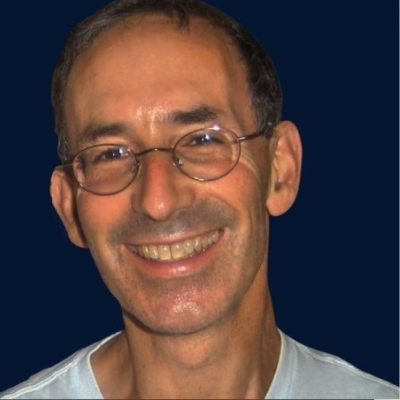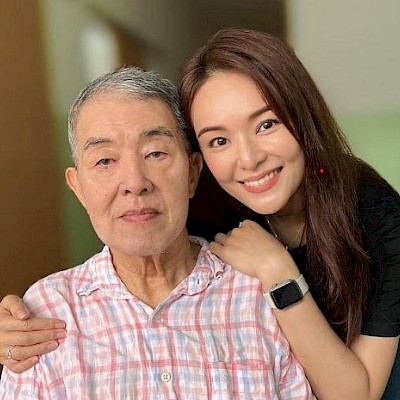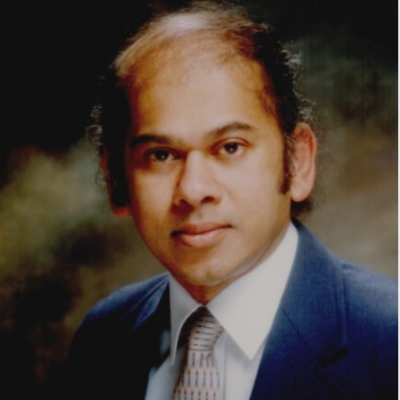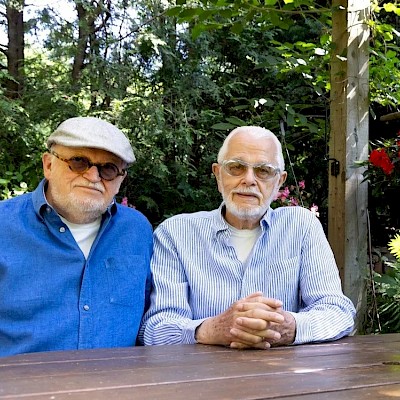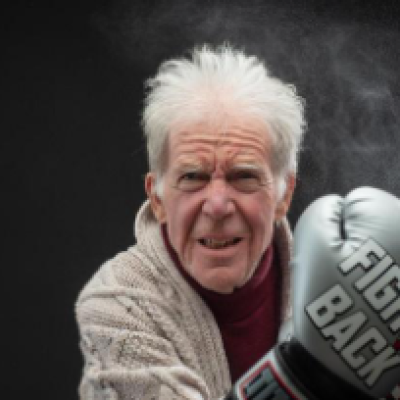
Bill Russell
“On a personal level, he was just a delightful individual — very, very competent, but also very humble and modest, despite the fact that he was a very revered figure in the Legislature by all parties,” remembered U.S. Sen. Peter Welch, D-Vt.
In remembering Bill Russell, a longtime resident of Calais and chief of Vermont’s Legislative Counsel, friends and colleagues time after time used the same word to describe his demeanor: steady.
At work under the golden dome, Russell earned a reputation as a trusted confidante and unbiased legal sounding board for state lawmakers, ultimately building an office from the ground up that would continue after his retirement.
Outside the Statehouse, he was a loyal friend and family member, and an active member of his tiny village of Maple Corner — reliably available for the village on Town Meeting Day, or if a neighbor simply needed a ride to work. On stage playing in various bands throughout the years, Russell was often the player keeping a steady beat on bass. And in his final years, Russell was determined in his fight against Parkinson’s disease — a battle that he fought “right ‘til the end,” his daughter Kate Russell told VTDigger on Tuesday.
Russell died on August 15 in Sante Fe, New Mexico, where he had been living for more than three years with his wife, Maureen Russell, in a house Kate fixed up for her parents next door to her own. He was 80 years old, and had been battling Parkinson’s since 2013.
In the late 1960s and early ‘70s, Russell — a graduate of Georgetown Law — was living and working as a congressional staffer in Washington, D.C., where he met his to-be-wife Maureen on Capitol Hill. As Kate tells the story, her parents married in 1967 and had their first daughter, Sarah, in 1970 — and that’s when Russell began to crave “a little more sanity and security” outside of the beltway.
Luckily for a Hill staffer soured on D.C., the early 1970s ushered in a new era of government philosophy and structure. Embittered by Richard Nixon’s tumultuous presidency, the American public’s trust in the federal government was at an all-time low. Its dissatisfaction became palpable at the ballot box. By 1974, Vermonters elected their first-ever Democratic U.S. senator, the reformist “Watergate baby” Patrick Leahy.
It was around this time that efforts to bolster government accountability and professionalization ramped up. Take, for example, the formation of the Congressional Budget Office in 1974, a nonpartisan staff that oversees the budgetary process on Capitol Hill. Across the country, similar efforts manifested, signaling a shift in political power back to state legislatures. With that shift came the need for professional staff in Statehouse halls.
In came Russell, who arrived in Vermont, his young family in tow, in 1971. When Russell accepted his role as the chief counsel for the Vermont Legislature, the small state’s Office of Legislative Council, as it was then known, was entirely new, and consisted of just one staffer: himself.
Stephen Klein, the former director of Vermont’s Chief Fiscal Office, was a longtime colleague and friend of Russell’s. He said Russell was a consensus builder at a time when cooperation was in short supply in politics. In other words, he was “perfect” for the new job.
“His style was always very, very cooperative. He was always that person who tried to work with people to get them all to buy in — almost to a fault,” Klein quipped.
Arguably, Russell’s greatest political test in Montpelier came early in his career. A few short years into the gig in 1976, Russell was tasked with making the Legislature’s case in Vermont’s first-ever impeachment of a public official, Washington County Sheriff Mike Mayo. The predicament was unprecedented in the state, Russell recalled to Vermont Public decades after the fact.
“He was just such a natural sweetheart,” said Geof Hewitt, Russell’s longtime friend and neighbor. “He was the ultimate kind, gentle friend. He was just there.” Photo courtesy of the Russell family.
“There was no precedent,” Russell said in a 2018 interview. “We had to decide how the Legislature would function. But we did have a model: the one for Nixon!”
The following years brought the usual waves of chaos that ebb and flow in every state capital. Throughout it all, longtime lawmaker and former House Speaker Gaye Symington recalled Russell as a calm, grounded presence in the Statehouse. “I never saw him flustered,” she told VTDigger this week.
“The Statehouse can be such a whirlwind, and he never got caught up in that,” Symington said.
Symington’s years at the speaker’s dais (2005-09) were Russell’s final years helming the legislative counsel before he retired, and those are the years she worked most closely with Russell. The office of House Speaker is “very much a whirlwind of an office,” she said, and Russell was someone with whom she could “think out loud.”
“He had seen a lot and could put things in context,” she said.
But never, according to Symington, did Russell cross into the territory of bringing a partisan slant to his legislative work.
“He also had a really clear appreciation for the role of a citizen legislature, and he was just always respectful of that role,” she said.
Russell’s commitment to nonpartisanship was a principle he instilled in the Office of Legislative Counsel, U.S. Sen. Peter Welch, D-Vt., told VTDigger this week. Welch worked closely with Russell during his years in the Vermont Legislature, particularly as Senate President Pro Tempore, preceding his election to Congress in 2006.
“I strongly believe that that tradition of nonpartisan staff, professional staff, has been very beneficial to the functioning of the Vermont Legislature, to the benefit of Vermonters,” Welch said. “He’s one of two people that I think played a major role in creating that culture of trust that is absolutely essential for Republicans and Democrats and independents to have confidence that they’re being treated fairly and equally.”
Asked who was the second person he credited with building a lasting legacy of nonpartisanship in the Legislature’s professional staff, Welch said it was Klein. Initially a one-person office, the Office of Legislative Counsel steadily expanded over the years, with Russell hiring and training staffers along the way. Now, more than two dozen employees staff the office, according to the Legislature’s website.
“He was very practical and very fair, and I saw the benefit of that steadiness and professionalism, both in his work and the kind of staff that he hired and trained,” Welch said. “On a personal level, he was just a delightful individual — very, very competent, but also very humble and modest, despite the fact that he was a very revered figure in the Legislature by all parties. He’s a special person and made a special contribution to our state.”
Russell’s work in Montpelier brought him into contact with the National Conference of State Legislatures, a national organization in which he eventually landed the role of chair, which took him all around the world for various government and diplomatic work. He also was a professor of constitutional law and legislation at Vermont Law School.
Vermont’s Office of Legislative Counsel is by and large an understated one, evading bold headlines or attention-grabbing moves. Its staffers are unelected. But the office’s responsibilities are monumental, Symington said. It is, after all, often staffers’ written words that eventually become the letter of the law.
“At the end of a session … the last week or two can feel like, ‘How is this ever going to come together?’ You leave and you just think, ‘Phew, we did it,’” Symington said. “And then (Russell) is sitting there with his staff … coming in and saying, ‘OK, what happened? Where are the studies that we need to make happen? What happens next? How do we translate the work of the legislative session … into whatever comes next?”
Russell carried his steady nature outside of Statehouse walls. In Calais, he was a constant presence: moderating Town Meeting Day, chairing the school board, regularly singing in the Old West Church Christmas Choir, organizing a volleyball league that played together for more than a decade, his various bands playing in local gigs.
One of his volleyball teammates and bandmates was Geof Hewitt, who lived near Russell. The two met in the late 1970s, when Hewitt’s family moved to Maple Corner. The Russells welcomed them to the neighborhood with a pie.
As a neighbor, bandmate, teammate and friend, Hewitt could rely on Russell, he recalled to VTDigger. When Hewitt was unable to drive for a period of time, Russell would go out of his way to drive him to and from work every day.
“To him, that was nothing,” Hewitt said. “There was no pretense. He was just a very, very giving and sweet human being.”
“He was just such a natural sweetheart,” Hewitt said. “He was the ultimate kind, gentle friend. He was just there.”
•
Remembering Bill Russell
Use the form below to make your memorial contribution. PRO will send a handwritten card to the family with your tribute or message included. The information you provide enables us to apply your remembrance gift exactly as you wish.

